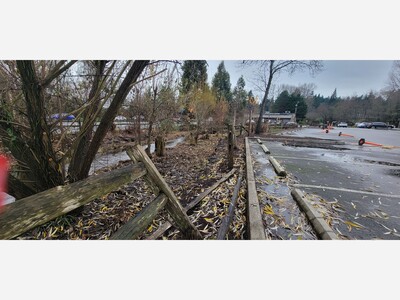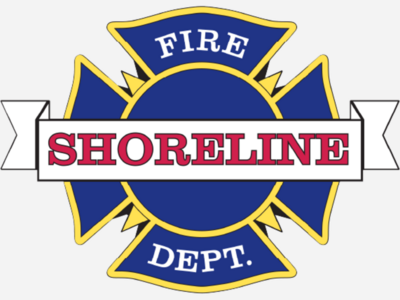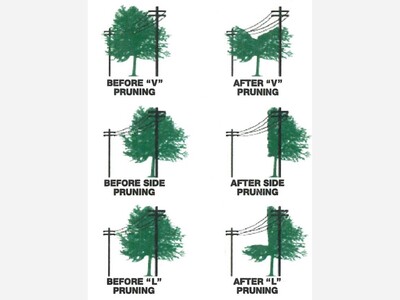Pruning Your Japanese Maples
As you walk the streets of your neighborhood for a bit of exercise or walking the dog, you will, undoubtedly, see one or two Japanese Maples (Acer palmatum or A. japonica) in front yards. Mine happen to be in the back yard where they can receive a bit of protection from the hot afternoon sun. Although I say ‘grown in the yard’, the smaller, dwarf specimens of these trees can also be grown in containers.
Whether they are full-size or dwarfs, pruning these plants to main optimal size and shape is a reasonably easy task. The goal is to prune to a natural shape and airy canopy. February is the perfect month to prune, especially for trunk and branch structure. When the leaves have dropped, the structural beauty and natural silhouette of these trees can be more easily seen. Also, large cuts heal more easily during winter. Normal garden tools like hand pruners, loppers and a small handsaw are all the tools you will need for this early season. Some things to consider while shaping the Japanese maple should include:
*Know how your Japanese Maple should naturally look. There are two basic types of trees. The upright varieties (at left) have branches that point upward, resembling open fans. The weeping, laceleaf maple (A. palmatum dissectum – seen below) has branches that grow to the sides, and downward, with a veil canopy.
*Prune to shape mature trees for the sake of appearance. Removing dead, dying, and diseased wood can be done at any age, but the removal of unappealing branches should wait until after the tree reaches two to three years of age. This gives the tree a chance to settle into its new site and begin to grow to its natural shape.
*Prune at the right time of the year. After the tree has lost its leaves in the winter, it is easier to see which branches interfere with the structure of the tree. In late spring, a light pruning will lessen new growth, preventing out of-control growth. It is best not to prune in early spring, when leaves and bark are tender and the ‘sap is running’, nor in the full heat of summer.
*Make good pruning cuts. When making thinning cuts (aka, removing entire branches), remember to cut just outside the branch bark collar, which is the ridge of material that fosters natural healing. The branch collar is a distinctive bulge at the base of the branch, where it connects to the trunk. (see left) Cutting into the branch collar will put your tree at risk. The branch collar seals off the wound, minimizing the chances of disease and decay. Proper pruning leaves the branch collar intact.
*Remove diseased, dying and dead stems. Dead wood is often found on the inside bottom of the tree. This helps to keep the tree healthy and reduce the spread of disease.
*Remove crossing or intertwining branches. Overlapping branches will interfere with the growth of preferred branches. Cut these overlapping branches at their base, nearest the trunk, instead of just trimming where they overlap. •
*Remove weak branches that interfere with strong branches. Clumpy foliage can be caused by branches that are too close to each other. Prune the weaker or less important of the branches.
*Remove branches growing in the wrong direction. Upper branches that are growing downward on an upright tree can be trimmed. On a weeping tree, a limb growing straight or upward would need trimming. Both limbs should be removed at the base next to the trunk, but outside the branch collar.
*Your branches should all have a "Y" shape. Remove the center stem of any "extra" branches to retain the "Y" shape. • Remove lower branches on upright trees if they hang low enough that walking underneath the tree is difficult. With a laceleaf tree, branches should hang low, although you may remove any that are touching the ground.
*Manage the buds. The direction of the buds determines the direction that the tree will grow. If the buds are growing in an inconvenient direction, they can be hand plucked to redirect the tree's growth direction.
*Any limb with a diameter that is more than 1/4 to 1/3 the size of the tree trunk should not be removed unless there are problems as mentioned elsewhere here. Never remove more than 1/5 of the tree's crown, or more than 30% of the tree each year. Removing tree growth can stimulate excessive growth and cause stress to the tree. Enough foliage should be retained to enable the tree to catch the sunshine and produce nutrients it needs. By examining the tree from all angles, (top to bottom, top to base, and side to side) you can determine the desired shape of the tree. Shrinking the tree to fit a location by pruning should really be avoided. If the tree does not fit the location, it should be removed or relocated. Simply because Japanese maples are small trees does not mean all of them will fit under a roof eave. Research the variety before you purchase it and find the one that wants to grow to the size you need. It will keep future problems to a minimum for you and the tree. A Japanese maple's best feature is its delicate, arching sweep of branches. Trying to prune it into a lollipop shape to fit near an entryway destroys its beautiful aesthetic.
When sunlight dapples through the leaves of your Japanese maple and creates a watercolor, see-through, dazzling effect of varying colors, you will be happy you took the time to find the right member of this acer palmatum group for your yard, gave it the appropriate planting site and took the time to learn about pruning your tree into a work of art all of them are meant to be. Happy gardening all!
Additional Reading
Brickell, Christopher& Joyce, David. AHS Pruning & Training. 1996. New York, NY: DK Publishing.
Brown, George E. & Kirkland, Tony. The Pruning of Trees, Shrubs and Conifers. 2004. Portland, OR: Timber Press.
Kenney, Neil. An Illustrated Guide to Japanese Maples for Garden Planting and Patio Pots. 2015. Kent, UK: Larchfield Publications.
Vertrees, J.D. & Gregory, Peter. Japanese Maples: The Complete Guide to Selection and Cultivation, 2010. Portland, OR: Timber Press.
Contributing columnist, Bruce Bennett, is a WSU Master Gardener, lecturer and garden designer. If you have questions concerning this article, have a gardening question or two to ask concerning your landscape or want to suggest a topic for a future column, contact Bruce at gardenguy4u@gmail.com.













